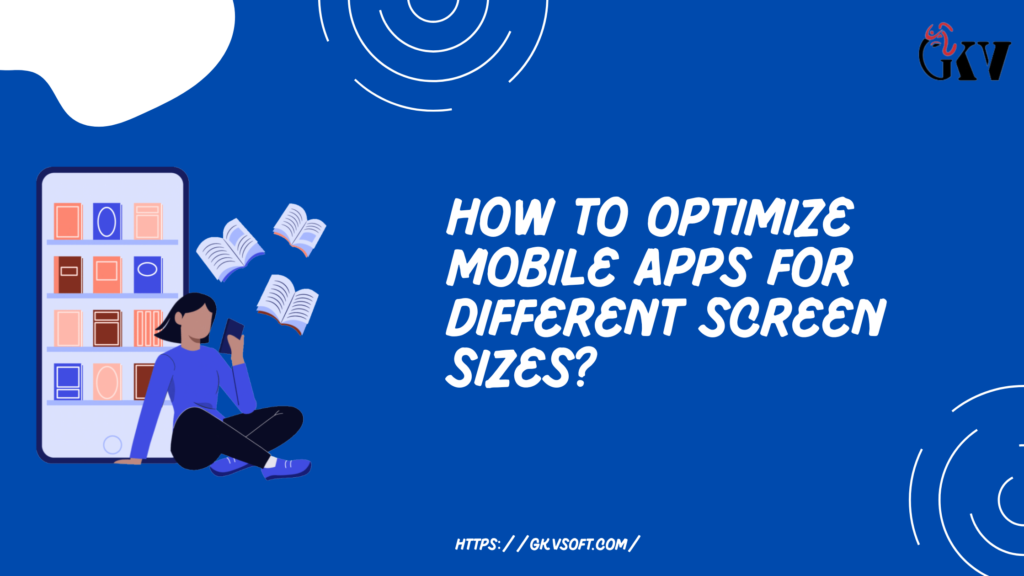Optimization of various sizes of screens forms one of the biggest challenges accompanying Mobile App Development in the increasingly fast-changing atmosphere.
The new generation of smartphones, tablets, and foldable devices demands this performance across varied devices from one application; optimizing would ensure such fluid performance across every screen size.
This report will detail optimal strategies and best practices for enhancing mobile apps to work well with different screen sizes in 2025.
1. Understand the Landscape of Mobile Devices
The landscape of devices and screen sizes that you are targeting should be well understood before optimizing a mobile app. Mobile apps must work smoothly across a vast number of screen sizes, ranging from small smartphones to larger tablets, and even the more recent foldable devices offering multiple form factors.
- Mobile Devices: For screen size, compare Android versus iOS phones when it comes to differences in screens and resolution. Androids range dramatically, but iOS devices often come in the same size options. For example, iPhone 12, 12 Mini, and 12 Pro Max.
- Tablets: Since tablets have generally much larger displays, you must ensure that your application displays content clearly on both smaller and larger tablets.
- Foldable Devices: All new foldable devices like the Samsung Galaxy Z Fold and Z Flip introduce challenges in transition when in a folded state and its unfolded state.
2. Responsive Design
The best strategy to ensure the look of the app on myriad screen sizes is responsive designing. This should result in automated sizing of any layout, texts, buttons as well as your images for disparate devices.
- Flexible Layouts: Use relative units such as percentages or “viewport width” (vw) and not fixed ones like pixels. Elements are now scaled relative to the size of the screen that is being used on a mobile device.
- Media Queries: Android uses different layout files in Android for every screen density or size, whereas iOS makes use of auto-layout constraints. Media queries are useful in CSS when it comes to web applications as well for changing the sizes of font and layout depending upon the viewport size.
- Break points: For the design, you should define what you call breakpoints for a particular device like a tablet, and above, you change the layout. Be wise about breakpoints; don’t create too many variations across devices so that it looks consistent.
3. Design with a Mobile-First Approach
A mobile-first design philosophy ensures that the app is optimized from a small screen up to larger displays. Such a design forces one to pare down the most important functionality and then even simplicity in design goes over pretty well across screens of various sizes.
- Content Hierarchy: Mobile-first design is about what’s essential, eliminating the unessential. Navigation becomes much simpler and there are fewer buttons or options on each screen. Content has to be optimized for the smallest of screens.
- Touch Targets: Since the screens are small, users will use their fingers to interact with an app. So, ensure that the buttons, links, or any clickable item is big enough to tap. Google’s Material Design and Apple’s Human Interface guidelines have a minimum target size of 48dp for Android and 44pt for iOS.
4. Use SVGs and High-Resolution Images
Scalable images for designing on multiple screen sizes and resolutions. High-quality images, even on other devices with varying screen densities.
While raster images such as JPEG or PNG will degrade in quality at higher resolutions, vector images, such as SVGs, can be scaled without any degradation in quality.
- Higher-DPI Images: For high-resolution screens, such as in Retina, use high-DPI images for a crisp, clear app.
- WebP or SVG for Images: Use SVG files, which are vector-based and resolution-independent, so your images will look sharp on any screen size or density. Use WebP images on Android to minimize file size without sacrificing image quality.
5. Testing on Multiple Devices and Emulators
With your application designed with responsive layouts and scalable images, testing should follow right after to ensure its proper function on a set of various screen sizes, resolutions, and even device types.
- Emulators and Simulators: Both Android and iOS offer device emulators and simulators. With them, you can test how your app looks and functions on other screens and resolutions. Take advantage of these tools in appearance and functionality testing on different devices.
- Real Device Testing: Emulators are great, but there’s no substitute for real devices. Run on all devices across the gamut of different screen sizes and resolutions and thus possibly missing in emulators.
- Automated UI Testing: There are various tools, for instance, Appium or Espresso that will support automating cross-screen-size-based UI testing such that your application would be guaranteed to behave at any point as intended.
6. Take Care of Foldable Devices and Dynamic Screens
Foldable devices are slowly gaining popularity in 2025. There are certain challenges to a mobile app developer. These devices come in various modes—folded or unfolded—and they need different layouts for each mode.
- Flexible UI: Your app needs to adjust smoothly from portrait to landscape mode, as well as from folded to unfolded states. This requires adaptive layouts that change according to the current form of the device.
- Test Transitions: Inspect how an app responds to state transition — when it becomes folded from unfolding or while being orientated, etc. Also, make sure not to let go of the context in such situations by switching non-worsening into a pretty slick user experience.
Conclusion:
With the mobile-first world, it is no longer an optional requirement to optimize mobile applications for different screen sizes. By choosing responsive design principles, testing across various devices, and focusing on scalability, your application will provide a seamless user experience regardless of the device being used.
With newer form factors like foldable devices being introduced, keeping up with trends will be need of the hour to deliver best-in-class mobile experiences in 2025.

